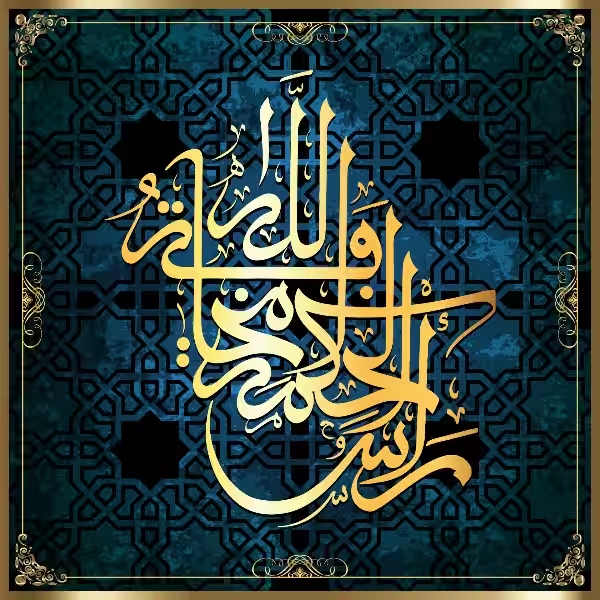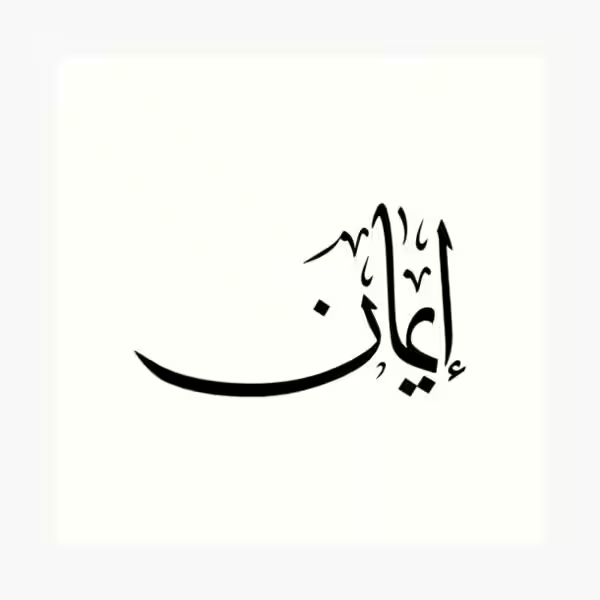
This article delves into the complex translation of the English word “believe” into Arabic, particularly for a tattoo request. Maggie, a Lebanese woman, seeks the most accurate translation, hoping to capture the full emotional weight of faith, hope, and conviction in a meaningful tattoo. Her father penned a word for her, but she needs further clarification. Understanding the nuances of this word is crucial, as a single translation might not fully convey the intended message.
The Spectrum of “Believe”
The English word “believe” encompasses a wide range of meanings, from religious faith to personal conviction and hope. It signifies trust, confidence, and even a deep-seated certainty. However, translating this multifaceted concept into another language, especially one as rich and nuanced as Arabic, demands careful consideration of context. A simple replacement might fall short, potentially losing the specific feeling Maggie wants to convey in her tattoo. The different connotations of “believe” need to be dissected to find the most appropriate Arabic equivalent.
Religious Belief vs. Personal Conviction
For statements like “I believe in God,” the most direct and accurate translation in Arabic is آمن (aamana), meaning “believed” or “had faith.” This verb firmly anchors the statement within the religious sphere. However, when discussing personal convictions, such as “I believe things will get better,” or “I believe I can achieve my goals,” a simple translation of “I believe” (آمن) might not fully reflect the underlying conviction, aspiration, or determination. This distinction is critical for creating a tattoo that truly resonates with Maggie’s intended message.
Beyond “I’taqada”: Exploring Alternative Translations
The verb اعتقد (i3taqada), often used to translate “believe” in general contexts, might fall short for Maggie’s needs. While it conveys belief, it lacks the specific nuances of hope, determination, or conviction that “believe” often carries in English. Let’s explore some alternatives that capture the desired emotions more accurately.
Conviction and Certainty: اقتناع (iqtinaa3)
The word اقتناع (iqtinaa3) offers a stronger translation, conveying the meaning of “conviction” or “being convinced of something.” This alternative better encapsulates the sense of certainty and determination that might be implicit in Maggie’s intended phrase. It suggests a deeper level of belief, and a strong stance regarding the matter.
Other Powerful Connotations
Beyond iqtinaa3, other Arabic terms can capture specific aspects of “believe.” Consider these options depending on the emotional weight Maggie intends to convey in her tattoo:
- العزيمة (al-3azeema): Determination, resolve. This translates the unwavering aspect of belief.
- الثقة بالنفس (ath-thiqa bi-n-nafs): Self-confidence. This captures the belief in one’s own abilities.
- القوة الداخلية (al-quuwa ad-daakhileeya): Inner strength. This focuses on the strength of belief from within.
- الأمل (al-amal): Hope. This translates the aspirational aspect of belief.
These terms provide a range of options, each with a different emotional resonance. Understanding which nuance best aligns with Maggie’s vision is key to a successful translation.
Deciphering the Written Word
To help Maggie further, I’m eager to understand the specific Arabic word her father wrote. Please provide the word, and I will break down its components – the letters, sounds, and diacritics – to clarify its meaning and offer alternative translations that perfectly reflect the desired nuance.
Understanding the Arabic Verb “Aamana” (ﺁﻣَﻦَ)
The Arabic word آمن (aamana) is a crucial element in understanding the nuances of belief. It signifies faith, trust, and often, belief in a divine being. Aamana is a past tense, masculine, singular form of the verb.
Grammatical Structure and Pronunciation
Let’s break down the word آمن (aamana):
- ﺁ (ā): This represents the “a” sound, often a short vowel.
- ﻡ (m): This is the “m” sound.
- ﻥ (n): This is the “n” sound.
The small diacritic mark (َ) above the first “a” indicates a short vowel.
The present tense masculine singular form of the verb is ﻳُﺆﻣِﻦُ (yu’minu). These grammatical intricacies are essential for understanding the nuances of usage and different tenses. Understanding the letters and the diacritics is key to navigating the written form and correct pronunciation.
Remember, Arabic is written right-to-left, unlike English. This fundamental understanding is crucial to reading and understanding the word correctly.
Resources for Further Learning
For those seeking to enhance their Arabic language skills, I recommend visiting arabic.fi. This website offers extensive resources, including thousands of words, phrases, grammar lessons, and other materials, making it a valuable tool for learners. Its accessibility and vast collection of information make it a worthwhile resource for deepening your knowledge of Arabic language.
By understanding the various nuances of “believe” in Arabic, we can help Maggie choose the most appropriate translation for her tattoo. The choice ultimately depends on the specific message she wishes to convey, and the emotional impact she seeks to evoke. The goal is not just to translate words, but to translate feelings and convictions.
FAQ: Translating “Believe” into Arabic for a Tattoo
This FAQ addresses the nuances of translating the English word “believe” into Arabic, particularly for a tattoo request, focusing on capturing the full intended meaning.
Q1: What is the most common translation for “believe” in a religious context (e.g., “I believe in God”)?
A1: The most appropriate translation for “believe” in a religious context is the Arabic verb آمن (aamana). This verb conveys the sense of faith and trust in a divine being.
Q2: Is “اعتقد” (i3taqada) a suitable translation for “believe” in general contexts, like “I believe things will get better”?
A2: While “اعتقد” (i3taqada) means “to think” or “to believe,” it doesn’t fully capture the connotations of determination, hope, or conviction that the English “believe” often carries in phrases like “I believe things will get better” or “I believe I will succeed.” It’s a good starting point for general belief, but other words might be more appropriate for conveying the specific emotions.
Q3: What alternative Arabic words can convey the different nuances of “believe”?
A3: Several Arabic words can capture different aspects of “believe,” depending on the specific nuance desired. For example:
- اقتناع (iqtinaa3): This conveys conviction or being convinced of something. It’s a strong contender if the intended meaning emphasizes certainty and determination.
- العزيمة (al-3azeema): This emphasizes determination and resolve.
- الثقة بالنفس (ath-thiqa bi-n-nafs): This highlights self-confidence.
- القوة الداخلية (al-quuwa ad-daakhileeya): This emphasizes inner strength.
- الأمل (al-amal): This expresses hope.
Q4: How do I choose the best translation for my tattoo?
A4: The best translation depends heavily on the specific context and the emotional impact you want the tattoo to convey. Consider the precise meaning you want to express and the feelings that the English “believe” evokes in your situation. Precise one-to-one translations may not capture the full meaning.
Q5: Can you help me translate a specific phrase my father wrote?
A5: Yes, please provide the phrase in Arabic that your father wrote. We will then work together to find the most appropriate translation, taking into account the specific context and the desired meaning.
Q6: Are there resources available to help me learn more about Arabic words and their nuances?
A6: Yes, the website arabic.fi offers extensive resources for learning Arabic, including thousands of words, phrases, grammar lessons, and more. It’s a valuable tool for expanding your understanding of the language.








